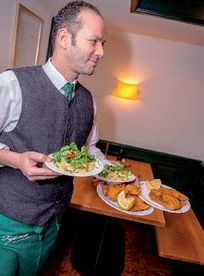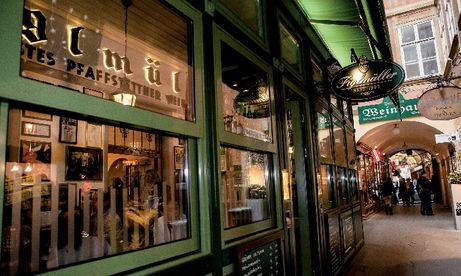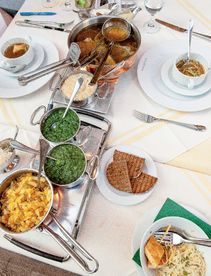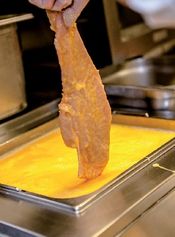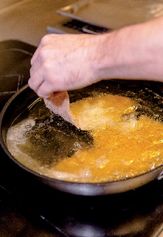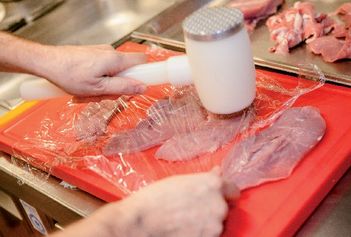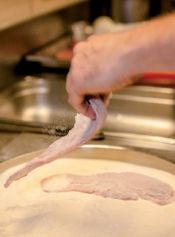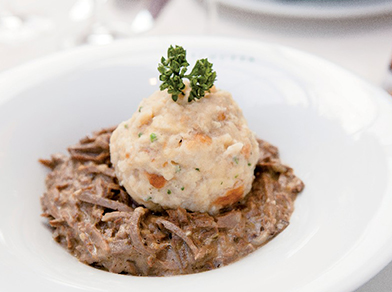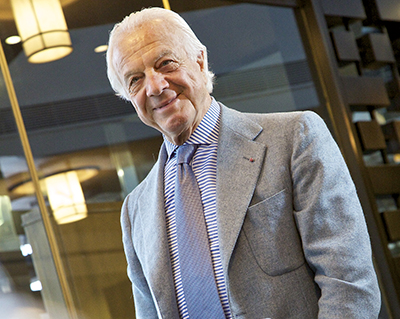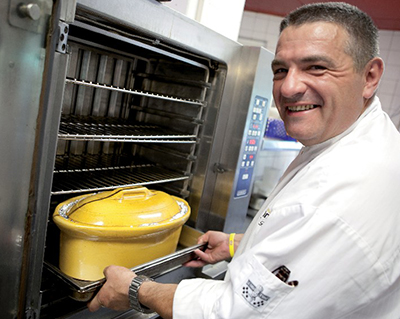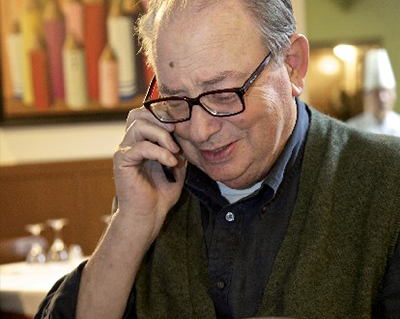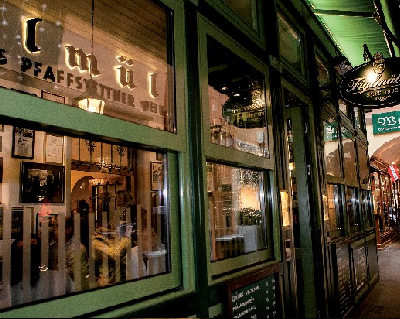Veal in Vienna
Plenty of cities across the world serve a wealth of different cuisines, but there really is only one that can claim having its own style of cooking, and that is Vienna. This dates back to the time when Vienna was capital of the considerable Austro-Hungarian Empire. The city was a melting pot of at least sixty different nationalities and people from far out in the surrounding countryside worked in the city’s kitchens. No wonder then, that country cooking is reflected in local cuisine. One key characteristic is the farmer’s inability to let anything go to waste. This has resulted in a rich selection of traditional meat cutting techniques still practised in Vienna today, like the Tafelspitz and the angle at which it is removed from the veal rump tail, in combination with its iconic thickness.
At Plachutta Restaurant, Vienna, the Tafelspitz and the Schnitzel are served every day to anywhere between eight hundred and a thousand people! One could call this mass production, but Austria’s national dishes are always served with a fastidious eye for detail. The person responsible for their popularity in Austria was Emperor Franz Joseph, who declared them his favourites at the end of the nineteenth century. At Plachutta Restaurant, this is the responsibility of Mario Plachutta, son of a leading chef who authored numerous cookery books and was a great promoter of traditional Viennese cuisine. Mario continues his father’s legacy and has been very successful: what was once one family restaurant is now an emporium with 6 restaurants, 350 employees and one million guests every year. Our table is ready and we are looking forward to experiencing the ritual that is the Tafelspitz.
Two warming trays appear on the table in combination with a large copper pan containing the Tafelspitz. Then the waiter pours a bouillon into our soup bowls and we are asked to choose one of three garnishes: strips of salted pancake, noodles or salted biscuits. We are told to scoop the marrow out of the bouillon, season with salt and pepper and spread it on a slice of toasted rye bread. Then, the next step in the ritual involves a collection of little copper pans laid out on the warming trays. One contains sautéed potatoes, another spinach à la crème, Apfelkren (apple sauce with grated horseradish), a sauce made of chives and yet another with grated horseradish. As if we could possibly have room for any more, Kalbsbeuschel is brought out to follow this rather filling main course; a stew made of finely sliced veal sweetbreads. Our conclusion?
That Viennese cuisine is country cooking with refined and delicate flavours.
www.plachutta.at
The real Wiener Schnitzel
We have encountered no other dish that has caused such controversy about its origins, as the Wiener Schnitzel. Does it originally come from Italy? Did the Italians get it from the Spanish, who may well have pinched it from the Arabs? There are certainly plenty of theories, and plenty have written on the subject, but for the Wiener Schnitzel we are simply going to Vienna. The remaining big question here, of course is, which restaurant in Vienna has the best schnitzel? One name that comes highly recommended by insiders, is Figlmüller. When we get there, we meet Thomas Figlmüller, the fourth generation in this family business. Great-grandfather Johann had a small restaurant in the village of Brauhaus and moved it to Vienna in 1905. In the following one hundred years, very little has changed. Johann’s strictness with his chefs about the quality and size of the schnitzels has led to bigger and bigger portions. One frustrated chef hamme- red the meat for so long, that he managed to make the largest schnitzel in Vienna, and they still are.
The coarseness of the flour causes the breadcrumbs too loosen from the meat in the pan, allowing the meat to soufflé nicely. That is the signature of the Wiener Schnitzel. He dips the floured piece of veal into a basin of lightly beaten eggs and then into bread- crumbs which they make from special rolls, dried slowly in their oven, and crumbled into breadcrumbs. Now it is ready to go into the pan.
Markus melts a generous helping of clarified butter mixed with vegetable oil in a large pan. He tests the temperature with a breadcrumb (ideally 180°C/355°F). Once it has stopped sizzling, the fat is ready for the schnitzel. The crumb on the schnitzel turns into a perfect light-brown crust after just one minute, and Markus explains how the perfect Wiener Schnitzel should not be allowed to absorb all of the fat. “You should be able to sit on it without leaving a grease mark on your trousers!” We ask Thomas whether or not, after so many years, he can even bear the sight of another Wiener Schnitzel. Without any trouble at all was his reply! He eats one every other day, as quality control of course, and likes it served with his grandmother’s potato salad.
www.figlmueller.at
